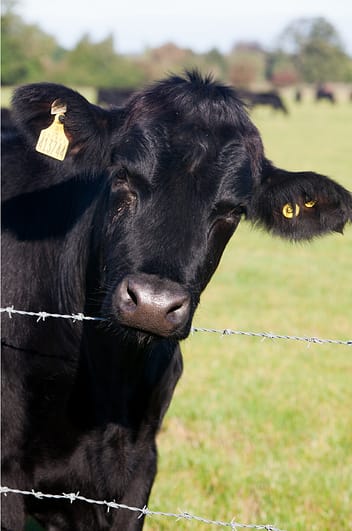Strategic Partnerships for Durability: Bagley Risk Management
Strategic Partnerships for Durability: Bagley Risk Management
Blog Article
Comprehending Animals Threat Protection (LRP) Insurance Policy: A Comprehensive Guide
Browsing the realm of animals danger defense (LRP) insurance policy can be a complex venture for lots of in the farming field. From how LRP insurance coverage operates to the numerous coverage choices readily available, there is much to discover in this comprehensive overview that could possibly form the method livestock manufacturers approach risk administration in their services.
.png)
How LRP Insurance Policy Works
Sometimes, comprehending the technicians of Animals Threat Security (LRP) insurance can be complicated, but breaking down how it functions can give clarity for ranchers and farmers. LRP insurance coverage is a danger administration tool made to safeguard livestock producers versus unanticipated price declines. It's important to keep in mind that LRP insurance policy is not a profits guarantee; rather, it concentrates only on cost danger defense.
Qualification and Insurance Coverage Options

When it comes to insurance coverage options, LRP insurance offers producers the flexibility to select the protection level, protection duration, and recommendations that finest suit their threat monitoring demands. By understanding the eligibility standards and insurance coverage options offered, livestock producers can make enlightened choices to manage danger effectively.
Benefits And Drawbacks of LRP Insurance Policy
When examining Animals Risk Protection (LRP) insurance policy, it is necessary for livestock manufacturers to weigh the advantages and drawbacks fundamental in this threat management tool.

One of the key advantages of LRP insurance is its capability to offer defense against a decline in animals prices. In addition, LRP insurance supplies a level of flexibility, allowing producers to tailor coverage levels and policy periods to match their particular demands.
One limitation of LRP insurance is that it does not safeguard against all kinds of risks, such as disease break outs or natural catastrophes. It is important for producers to meticulously evaluate their specific risk direct exposure and monetary scenario to determine if LRP insurance policy is the appropriate danger administration device for their procedure.
Comprehending LRP Insurance Policy Premiums

Tips for Maximizing LRP Perks
Optimizing the benefits of Animals Danger Protection (LRP) insurance policy needs strategic planning and proactive risk monitoring - Bagley Risk Management. To maximize your LRP insurance coverage, think about the complying with suggestions:
On A Regular Basis Assess Market Problems: Stay informed regarding market patterns and rate check over here fluctuations in the animals sector. By keeping an eye on these variables, you can make enlightened decisions concerning when to acquire LRP insurance coverage to shield against prospective losses.
Establish Realistic Protection Degrees: When picking insurance coverage levels, consider your manufacturing costs, market price of livestock, and potential dangers - Bagley Risk Management. Setting reasonable insurance coverage levels makes certain that you are appropriately shielded without overpaying for unneeded insurance
Diversify Your Insurance Coverage: Rather of counting only on LRP insurance coverage, take into consideration diversifying your danger management approaches. Integrating LRP with various other danger monitoring tools such as futures contracts or options can supply extensive protection against market unpredictabilities.
Evaluation and Adjust Protection Routinely: As market conditions transform, periodically evaluate your LRP coverage to ensure it straightens with your existing threat direct exposure. Adjusting insurance coverage degrees and timing of acquisitions can assist maximize your threat protection approach. By complying with these pointers, you can make the most of the advantages of LRP insurance i thought about this coverage and secure your livestock operation versus unforeseen dangers.
Conclusion
To conclude, animals risk security (LRP) insurance is a useful device for farmers to handle the economic dangers connected with their livestock operations. By recognizing exactly how LRP works, qualification and insurance coverage options, along with the benefits and drawbacks of this insurance, farmers websites can make enlightened decisions to safeguard their source of incomes. By thoroughly considering LRP premiums and carrying out strategies to make best use of advantages, farmers can mitigate potential losses and make certain the sustainability of their operations.
Animals producers interested in getting Animals Danger Defense (LRP) insurance coverage can explore an array of qualification requirements and insurance coverage alternatives tailored to their specific livestock procedures.When it comes to insurance coverage options, LRP insurance policy supplies producers the versatility to select the protection degree, protection duration, and endorsements that finest suit their threat management demands.To understand the intricacies of Animals Risk Protection (LRP) insurance policy fully, recognizing the elements influencing LRP insurance coverage costs is essential. LRP insurance coverage premiums are determined by various components, including the insurance coverage degree selected, the expected price of livestock at the end of the protection duration, the type of animals being guaranteed, and the length of the insurance coverage duration.Review and Change Protection Routinely: As market problems change, regularly examine your LRP coverage to ensure it aligns with your existing threat exposure.
Report this page